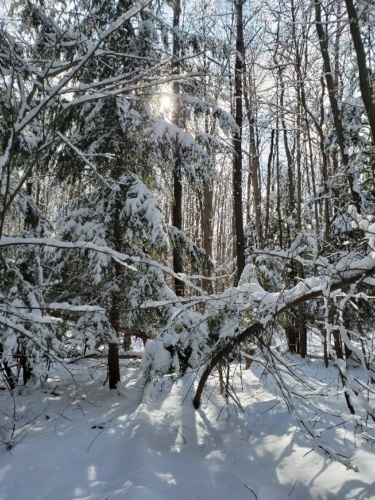RTPI Survey – February 14, 2020 by Taylor Haight;
Jamestown Community College Student/RTPI Intern
On Valentine’s Day, volunteers from Jamestown Community College and the community participated in an HWA survey at Roger Tory Peterson Institute and JCC preserves. Hemlock Woolly Adelgid, or HWA, is an invasive, aphid-like insect that feeds on the sap of hemlock trees. Feeding disrupts the flow of nutrients to the twigs and needles and could lead to the death of the tree within four to ten years. Since it’s first detection in the early 1920s, HWA has spread to 17 states, and now occupies more than half the native range of the hemlock.

HWA is very hard to detect during most of the year due to its small size. Surveys take place during the winter months when the insect forms protective woolly masses. The masses about one-quarter of the size of a cotton swab, and are on the underside of branches. Spider sacs and sap are sometimes confused for HWA, but while these might be found on only one part of a branch, HWA is generally found all along the branch at the base of needles.
Surveys for HWA aim to check at least 100 trees in a stand, looking at no more than six branches per tree. More than 200 hemlock trees were checked during Friday’s survey. Due to cold temperatures, volunteers only stayed out for about thirty minutes. HWA was not found at the RTPI or JCC preserves. However, it has been detected in Chautauqua county near Fredonia, as well as in many other New York and Pennsylvania counties, and the Allegheny National Forest. Continued monitoring of hemlock trees through surveys is necessary to protect hemlock stands and prevent the insect from spreading.












